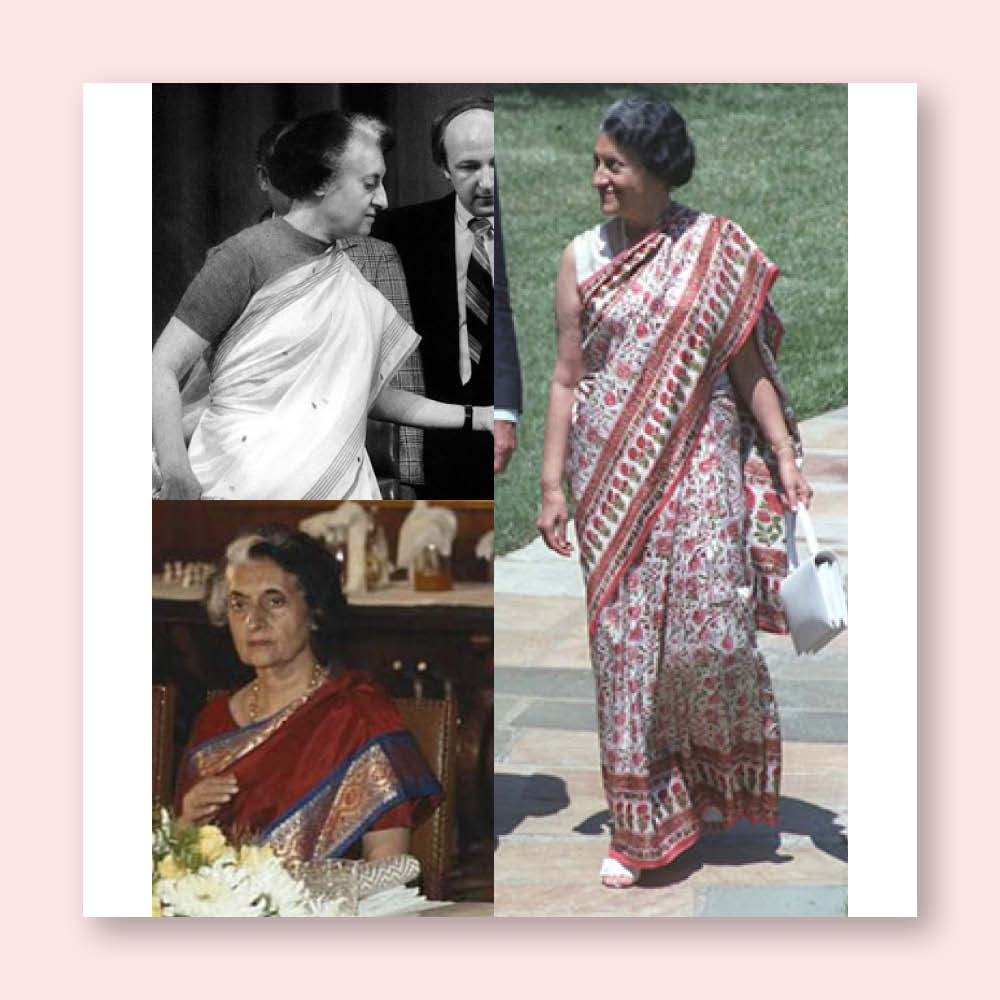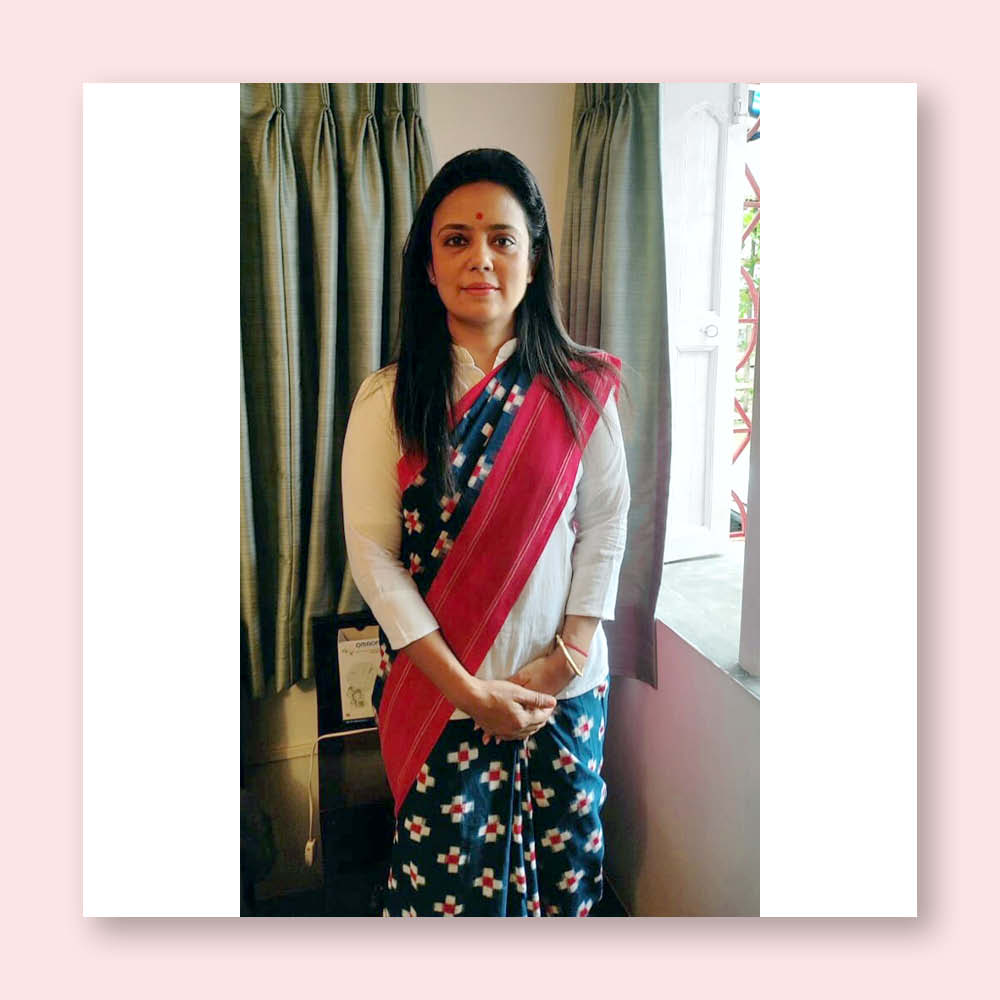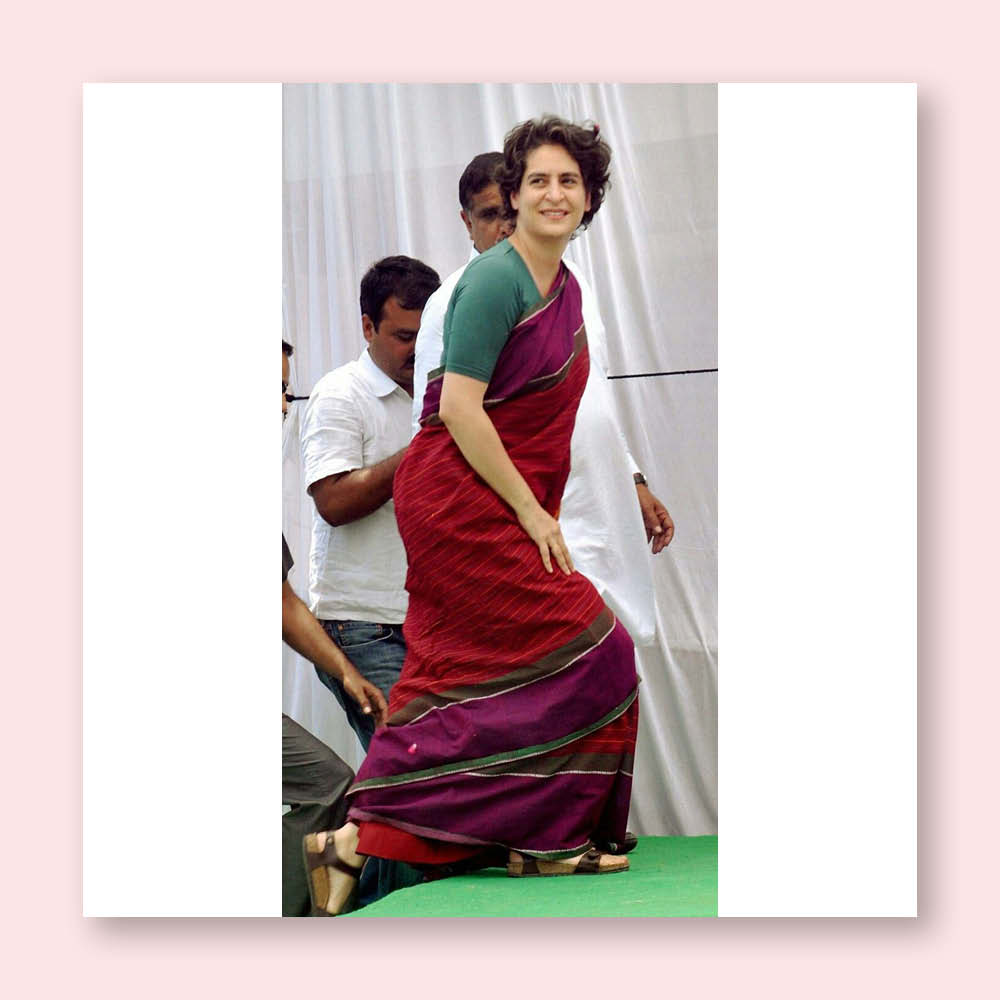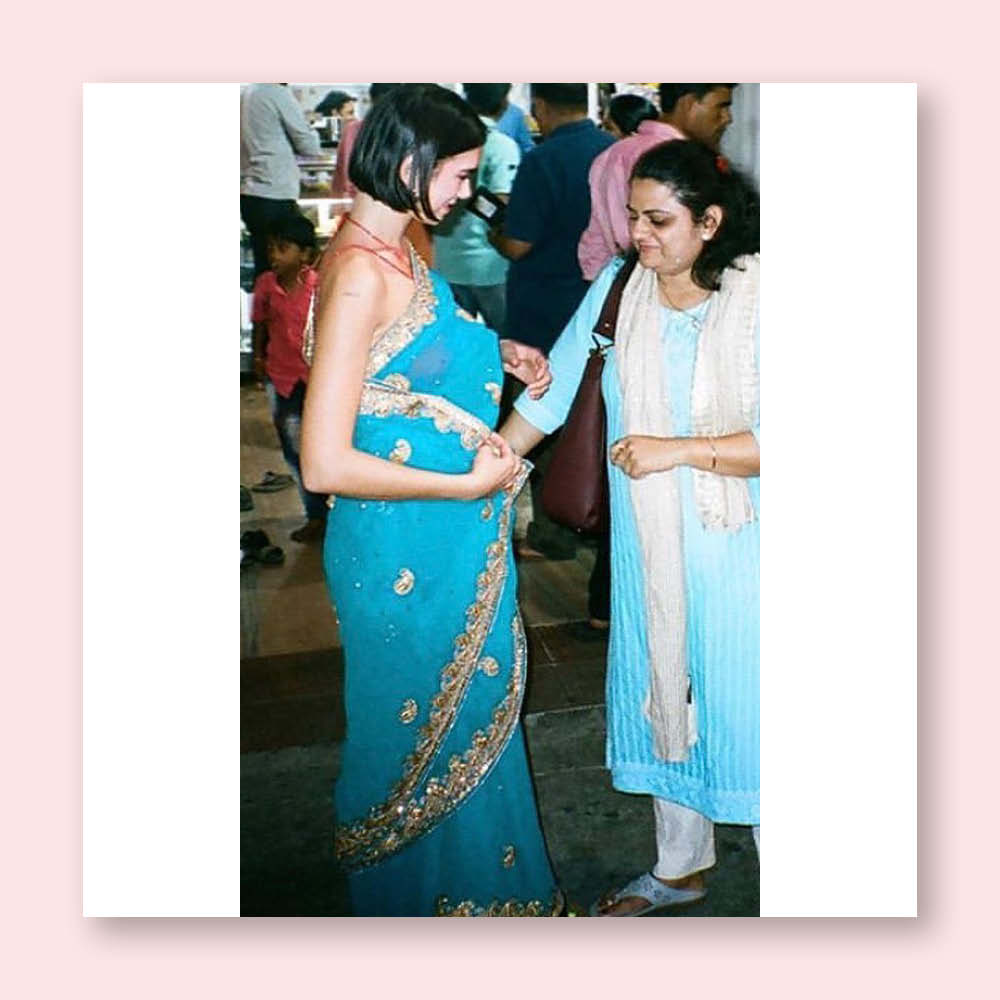“In one of the restaurants in Delhi, saree is not considered to be a smart outfit,” a woman wrote on a Facebook post which has since gone viral. She alleged in her post that Aquila, a restaurant at Ansal Plaza, refused to let her in because she was wearing the sari, which the restaurant staff reportedly did not consider smart enough. Social media users came out in her support, and soon, the restaurant issued a statement on Instagram rejecting the woman’s allegations. Instead of demeaning the sari, spokespersons at Aquila said that the lady had no reservation, was politely asked to wait, but “the guest entered the restaurant and began to fight and abuse our staff.” They also allege that she slapped their manager.
While this controversy unfolds and users of social media debate extensively, we are left with one sartorial conundrum: Is the sari smart enough for casual as well as formal occasions? Let’s take a trip down the quintessential sari’s appearance as formalwear, casualwear and dare we say, smartwear.
The Whole Six Yards Of Style
You may already know this, but the sari has a long history in the Indian subcontinent, and is currently worn not just in India, but also in Nepal, Bangladesh and Sri Lanka. No wonder then that the sari, in its many forms and varieties, has made an appearance throughout Indian history, especially in the representation of Indian women. Not only is Rani Lakshmibai of Jhansi portrayed as a warrior woman going to battle in a sari, but so are revolutionaries like Durgawati Devi (more popularly known as Durga Bhabhi) and Matangini Hazra, and women politicians like Sarojini Naidu, Sucheta Kriplani, etc.
In fact, Bhikaji Cama—the first Indian to hoist the Indian national flag abroad—is known to have donned the traditional sari while in Europe, that too with the Gujarati/Parsi seedha pallu (draped over the right shoulder) style. The sari, especially cotton ones, have also been generally worn by ordinary Indian women. The impact of British industrialisation may have swamped the Indian market with cheaply produced cotton and synthetic saris, with machine-made floral motifs and block prints and synthetic dyes, but during the pre-Independence era, Indian women did take up the clarion call of Swadeshi. This brought a period of time when women were not only hand-spinning their own saris, but also draping the six yards to participate in protests.

A portrait of Bhikaji Cama, dressed in a sari worn in the Parsi style.
Clearly, during our freedom struggle, the sari was not just a garment Indian women wore, but a symbol of power and protest. It’s also quite evident that women wore it with pride everywhere, whether it was the battlefield or the podium at a protest or conference.
Dressed For Diplomacy…In A Sari
The fact that the sari is worn by Indian women at home (usually light, cotton ones, given the summer heat in the country), to work, and to festive occasions like weddings (bring out the Banarasis and Kanjivarams!), is well known. But over the decades, Indian women have also worn it to diplomatic missions abroad, and always in the more formal, ulta pallu (draped over the left shoulder) style.
Over her career spanning two terms as the prime minister, Indira Gandhi not only hosted foreign diplomats and heads of states in India, but also made many state visits abroad. At every occasion, she chose to wear the sari—usually, plain cotton ones with a simple border, or floral-print cotton saris, like the one she wore during her meeting with Ronald Reagan in 1982. Gandhi also wore simple silk saris on certain state occasions, as she did when Queen Elizabeth II came to India during a nine-day state visit in 1983.

Indira Gandhi with US President Ronald Reagan during her state visit in 1982. Image courtesy: Twitter/@LorenzLuthi/azivanduke
Our first woman president, Pratibha Patil, chose to stick to silk saris, usually in pastel colours and with long-sleeved blouses. In fact, the only times Patil skipped the sari while at work was during military and naval inspections, where wearing the six yards is simply not allowed. Sushma Swaraj, who held the office of the External Affairs Minister between 2014 and 2019, added her own little twist to the crisp workplace cotton and silk sari—a jacket! By adding a smart and matching jacket to the sari, Swaraj made her sartorial choices look more formal and executive than perhaps any Indian woman office-bearer ever has.

Pratibha Patil with Wen Jiabao, then Chinese Premier, in 2010.

Sushma Swaraj, during her Mongolia visit. Image courtesy: Twitter/@MEAIndia
Most women politicians attending parliament or rallies today—from Smriti Irani to Priyanka Gandhi, Mahua Moitra, and Mamata Banerjee—also choose to wear crisp cotton saris on most occasions, proving that the sari continues to be a powerful formal attire for women in politics.

Mahua Moitra, dressed in a Pochampalli cotton sari. Image courtesy: Twitter/@mahuamoitra

Priyanka Gandhi at an event. Image courtesy: Pinterest
Runways, Red Carpets And The Sari
Wearing the sari at Indian events is a given—we do it at weddings, conferences, parties, receptions, and celebrities do the same at award functions. In fact, until the formal gown and dress took over at Indian award functions—which younger actors have taken to—the sari was the norm on the Indian red carpet. But even now, the resplendent appearances made by veteran actor Rekha in dazzling, golden-hued silk saris make the headlines. In the last two decades, the sari has also made repeated appearances on international red carpets.

Rekha always shines in golden-hued sarees at events. Image courtesy: Twitter/@Ms_Lutyens
Aishwarya Rai Bachchan has donned the sari in its many avatars at the Cannes film festival, and each one made an impact. Can anyone ever forget the gorgeous, golden Tarun Tahiliani number she wore in 2013? 2013 also witnessed Sonam Kapoor Ahuja gracing the Cannes red carpet in a white, lace sari by designer Anamika Khanna, which was paired with a stunning golden jacket. Another brilliant appearance in a white sari at Cannes was made by Deepika Padukone in 2010. But it’s not just famous actors who have draped the sari to make an appearance on the red carpet. Actor Dev Patel’s mother, Anita Patel, wore a stunning black-and-gold sari to the Oscars in 2017, and took the world by storm.

Aishwarya Rai Bachchan, Cannes 2013. Image courtesy: Twitter/@Pehrani

Sonam Kapoor Ahuja, Cannes 2013. Image courtesy: Twitter/@SilamSiva

Deepika Padukone, Cannes 2010. Image courtesy: Twitter/@Mydesignersales

Anita Patel, with her son, Dev Patel, Oscars 2017. Image courtesy: Twitter/@carinanovarese

Vidya Balan at Cannes. Image courtesy: Twitter/@MuktaArtsLtd
With each of these appearances, the celebs have proved that the sari can make you look not just elegant and graceful, but ethereal, on red carpets. Most appearances made by the sari on fashion runways across the globe have the same effect. Such appearances are not only on Indian runways, but also on international ones. For example, London Fashion Week 2020 saw a storm of saris when the Indian High Commission and the London School of Trends collaborated to create a show representing handloom saris from all the Indian states.
While Indian women wearing the sari have always made a mark, international models and celebrities have also carried off the six-yard drapes on runways, red carpets and events. Naomi Campbell wore a stunning black sari with a gold border at the Lakme Fashion Week in 2009—in fact, Campbell has donned the sari many times, at many places, showing off how easily the sari transitions from elegant runways to casual launch parties. Dua Lipa wore a beautiful turquoise and gold chiffon saree while visiting a Jaipur temple in 2019.

Naomi Campbell wearing a sari at the Lakme Fashion Week, and a handbag launch in Mumbai. Image courtesy: Twitter/@NewEvents

Dua Lipa in a turquoise sari. Image courtesy: Twitter/@DUALIPA

Aishwarya Rai helping Oprah wear sari. Image courtesy: YouTube
So, from news presenters in the 1990s wearing crisp cotton saris, to American actors like Julia Roberts, Anne Hathaway, and Katherine Heigl wearing it in movies, to that iconic television moment in 2005 when Aishwarya Rai Bachchan taught Oprah Winfrey how to wear a sari—at all of these occasions, women draped in saris have highlighted just how versatile this attire is. In fact, if this brief history of sari in modern fashion proves anything, it’s the fact that this garment cannot be put into one box or category like casual or formal. A sari can transition into the perfect fit for any occasion, location, and any person who wants to wear it. In that sense, these six yards of beauty are the smartest in the world.